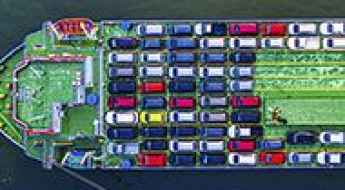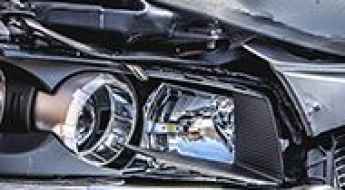Vehicles and driving
Left-to-Right: How Border Crossings Handle Side-of-the-Road Changes
While 66% of the world’s population drives on the right, the remaining 34% adheres to the left-hand side. This global division creates a unique engineering challenge: the border crossover. In several regions across Africa, Asia, and South America, drivers must transition from one side of the road to the other while crossing international boundaries.
To understand the global landscape of these regulations, you can explore our comprehensive list of left and right driving countries. However, the real magic happens at the physical borders, where ingenious road designs ensure that this transition is safe and fluid for motorists.
The Most Realistic Driving Simulators for True Road Enthusiasts
For the adventure motorist, driving simulators are more than just entertainment; they are high-fidelity tools that allow us to experience the world’s most technical routes from home. Unlike arcade games, these titles prioritize physics, tyre deformation, and terrain accuracy. Here is our selection of the most authentic driving simulators for those who crave realism.
The Best Used 4x4 for Off-Road Expeditions: A Definitive Buyer’s Guide
Buying a used 4x4 for off-road expeditions is an exhausting but critical process. Unlike buying a city car, choosing an expedition rig is about selecting a survival tool that must perform under extreme stress. Whether you are a seasoned overlander or preparing for your first adventure on the Karakoram Highway, this guide analyzes the best used 4x4 options to help you answer the eternal question: which one is truly the best?
Why Am I Receiving Mail Regarding My Car Warranty?
Have you noticed an increase in the number of car warranty offers you've received in the mail? You're not alone. Many consumers have reported receiving postcards informing them that their automobile warranties are about to expire.
Survival Guide: Navigating the Most Treacherous Road Hazards
Identifying road hazards is the most critical skill for any expedition driver. While driver error remains the primary cause of accidents, environmental traps—from unpredictable shoulder drop-offs to hidden oil slicks—pose a lethal threat on remote routes. In this survival guide, we analyze the top 10 treacherous road hazards you will encounter on the world's most demanding paths and how to navigate them safely.
6 of the Most Badass Classic Cars You Can Find Today
When you think of cool cars, you probably think of those insanely contoured rides that the rich and famous drive, or maybe you picture the luxury vehicles like the Rolls-Royce where you hardly expect them to drive it at all. For some, those cars don’t represent the true meaning of what it is to feel the thrill of owning an automobile.
The Most Dangerous Roads in the USA
Driving is an essential part of American life, but it comes with substantial risks. In 2020, the United States saw its highest traffic fatality rate since 2007, at 1.37 fatalities per 100 million vehicle miles traveled. Certain roads are far deadlier than others due to factors like heavy traffic, treacherous weather, poor road design, or unique hazards. From crowded interstates to isolated mountain passes, this article examines the most dangerous roads across all regions of the U.S. Here, Dangerous Roads staff delve into accident statistics, road conditions, design flaws, traffic volumes, and historical incidents that make these highways especially hazardous.
Where Are the Oldest Roads in the World?
The history of road construction is a testament to human ingenuity. From the stone-paved streets of ancient Mesopotamia to the highly engineered polymer-modified asphalt of today, roads have been the arteries of civilization. Understanding where the oldest roads in the world are—and how they were built—offers a fascinating look at the foundations of global transportation.
A Deeper Dive Into The Most Common Problems With Range Rovers
If you're the proud owner of a Range Rover, you know that it's a car that commands attention. But with that attention often comes envy – and sometimes even resentment. After all, a Range Rover is expensive, and its owners are seen as being able to afford the best of the best.
Sports Car for Rent: When Is It Worth Taking the Risk?
I’ll be honest—I've always had a thing for fast cars. Not the “midlife crisis red Ferrari” type of obsession, but the kind where, every once in a while, the idea of pushing the pedal in something that growls back sounds like a pretty great detour from everyday life.
The Impact of Poor Road Conditions on Vehicle Safety
Poor road conditions are more than just nuisances; they are a severe concern for motorists that can lead to hazards on the road, compromising vehicle safety and performance. Drivers face risks on the road every day, but when roadways are not properly maintained, those risks multiply, leading to increased accidents and vehicle wear and tear.
Comprehensive Guide to Automotive Manuals and Their Importance
In the realm of automotive knowledge, having access to reliable resources is essential for both enthusiasts and everyday drivers. The ability to find valuable information about vehicles enhances understanding and can lead to improved maintenance practices. It is vital to explore alternative means of gathering insights and operational techniques that extend beyond the conventional avenues.
4 Essential Technologies for Surviving High-Risk Road Expeditions
In the world of extreme driving, human error is the primary cause of accidents. However, as road infrastructure and vehicle capabilities evolve, new safety technologies are becoming the "silent co-pilots" of modern explorers. From the deep mud of the tropics to the frozen passes of the north, these four technologies are significantly reducing the risks of long-distance expeditions.
The Main Reasons Why People Decide to Buy Classic Cars
Many people are under the impression that classic cars are impractical and too expensive to maintain. However, this is not always the case. There are many reasons why someone might want to buy a classic car, including nostalgia,style, or uniqueness, among other things. This article will discuss why people decide to buy classic cars.
Common Car Insurance Mistakes to Avoid
Every state has its own particular guidelines dictating car insurance and what type of coverage you need. For example, car insurance rules in Pennsylvania may differ from Florida, which may vary from California.
The 10 Most Powerful Electric Motorcycles of 2026: Torque, Tech, and Speed
The "hum" has officially replaced the "roar" in the high-performance motorcycle segment. In 2026, electric superbikes aren't just an alternative; they are setting records that internal combustion engines can no longer reach. From hubless motors with staggering torque to solid-state batteries, here are the ten most powerful electric motorcycles currently dominating the asphalt.
Explaining the Different Types of Traffic Jams
Imagine this: You’re on a long trip and have finally found a sign that indicates that the upcoming exit has your favorite restaurant, hotels, and more. You relax a bit as you and your bladder feel assured that relief is only a few miles away. Your heart sinks, however, as your eyes catch a stagnant glint on the road you’re driving.
Lane Splitting: A Tactical Guide for Long-Distance Motorcyclists
For adventure motorcyclists, navigating heavy traffic is often more exhausting than the toughest off-road trails. Lane splitting—the practice of riding between rows of slow or stopped vehicles—can be a vital tool for managing engine temperature and reducing fatigue during long expeditions. However, mastering this technique requires more than just skill; it requires a tactical understanding of road psychology and safety limits.
Right-Hand Drive vs. Left-Hand Drive: A Comparison of Driving Experiences
When it comes to driving, countries around the globe all have their own way of doing things. The split factor is whether a person drives left-hand or right-hand, and it causes a lot of confusion for travelers each holiday season. Each style has its own feel to it, and it is important to feel comfortable either way if you are going to be driving in the opposite way to which you are accustomed. This guide has a comparison of the driving experiences.
Gathering Evidence Information After a Car Accident
In the event you find yourself in a car accident, you may not be thinking too clearly when it happens. At that time, you may have to concentrate on getting out of harm’s way to avoid further damage to your car or injuries to yourself and the other occupants of your car.
Reasons for Accidents on the 5 Freeway in CA, OR, and WA
Interstate 5 is considered one of the most dangerous highways in the United States, with a fatality rate of 13.47 deaths per 100 miles. Between 150 and 200 people lose their lives in a 5 Freeway accident every year. What exactly makes this 1400 mile highway so dangerous?
Building the Ultimate Expedition Rig: 8 Steps to Prepare Your Own Adventure Vehicle
For many, owning a dream car means buying one; for the true explorer, it means building it. Preparing a vehicle to survive the world’s most demanding environments is a massive undertaking that requires technical knowledge, iron willpower, and meticulous planning. Whether you are starting from a bare chassis or modifying a 4x4 for a transcontinental journey, these 8 steps will guide you through the complex process of building your own expedition-ready machine.
Toyota’s Off-Road Legends: The Best Rigs for Treacherous Terrain
In the world of extreme expeditions, one name stands above the rest: Toyota. From the high-altitude passes of the Himalayas to the relentless mud of the Amazon, Toyota’s engineering has earned the trust of explorers worldwide. However, not every model wearing a 4WD badge is built for survival. Here is an expert analysis of the Toyota vehicles truly capable of conquering the world’s most dangerous roads.
Your Car is Safe During Auto Transport and Here's Why
You've decided to ship your car and you're probably wondering if it's safe. You shouldn't worry - your car is perfectly safe during auto transport. In this blog post, we'll discuss why auto transport is a reliable way to get your car from Point A to Point B without any worries.
A Closer Look at the Different Vehicle Collision Causes and What You Could Do to Avoid Them
There are many different factors that can cause a vehicle collision. In this blog post, we will take a closer look at some of the most common causes and what you can do to avoid them. We will also discuss the consequences of a collision and what to do if you are involved in one.
Driving in St. Louis, MO - What You Need to Know
St. Louis is known as the Gateway to the West and is a wonderful place to visit. Whether you plan to see the iconic arch, attend a Cardinals game, or go to the zoo, you’ll never be at a loss for things to do. But before you can dive into these amazing attractions, you have to get there.
E-Bikes - The Vehicles of the Future
E-bikes are rapidly growing in popularity, with thousands and thousands being sold every year. However, this shouldn’t be considered too much of a threat to traditional bikes.
Semi Truck vs Motorcycle Accident Advice
Safety should be the number one concern for motorcyclists whenever they hit the road. It is more important than arriving at your destination. Many bikers have realized this, and some have come up with initiatives to promote safety for bikers.
How Can American Companies Secure The Safety Of Their Drivers?
Company drivers are the backbone of many businesses. They transport goods and services to customers and help keep businesses running. It is therefore important for companies to take measures to ensure the safety of their drivers. This blog post will discuss some ways that companies can do this.
The Safest and Most Dangerous Forms of Transportation
Whether purchasing a car or looking for a locomotive ticket to move from point A to point B, safety is one of the main concerns people express. In the modern age, one can choose numerous means of transport for mobility. Their choice would, of course, consider costs, convenience, and safety. While costs and convenience are crucial, safety is a more critical consideration, especially with the current statistics of accidents leading to injuries and deaths.
How To Stay Safe When Driving A Truck On A Dangerous Road of America
When driving a truck, safety is of the utmost importance. Trucks are larger and heavier than cars, and they can cause a lot of damage if they get into an accident.
The Perilous Link Between Addiction And Vehicular Accidents
Over the years, substance abuse has been among the greatest road safety problems. Whether it’s drugs or alcohol, there is definitely a perilous link between addiction and vehicular accidents. Yet, despite efforts by law enforcement to clamp down on DUIs, the problem still persists.
The safest modes of transportation
While we absolutely love talking about the most dangerous roads to drive through in the world, we are also aware that not everyone is into that kind of adrenaline - some would rather opt for the safest ways to travel possible.
Global Road Fatality Report: Understanding Risk in the World’s Deadliest Regions
For the extreme adventurer, there is a fine line between a calculated risk and a fatal error. While we seek the thrill of the edge, understanding the sobering reality of road safety statistics is a vital part of expedition planning. From the high-speed corridors of Brazil to the eroded paths of Nigeria, these are the regions where road conditions and traffic density create the highest risks for motorists.
What are the different types of car accidents?
Car accidents are an everyday hazard, every now and then we hear about some car accident on the highway or local city street. Well, car accidents can occur due to several factors such as the negligence of the driver, lack of attention, disregard for safety, or speeding.
A Detailed Guide To Buying A Car That’ll Perfectly Suit You
Buying a car is a positive step but it can be challenging to get the ideal vehicle. However, this process should not be daunting as long as you take the necessary steps to research the model you want. Here is a detailed guide to buying a car that will perfectly suit you.
The 4 Most Important Steps You Must Make After Surviving A Car Accident
While any accident that results in physical harm can be traumatic, surviving a car crash can leave lasting, life-altering damage. Whether you are the driver of the car, a passenger in another vehicle, or a pedestrian, there are several steps you must take to keep your health and legal standing safe.
Are Motorcycle Accidents Handled Differently Than Car Crashes in the USA? Find Out Here
Motorcycle accidents can be serious. In fact, they can often be more serious than car accidents. This is because motorcycles provide less protection than cars in the event of a crash. For this reason, it is important to know how motorcycle accidents are handled by the legal system. In this blog post, we will discuss how motorcycle accidents are different from car crashes and what you need to do if you are involved in a motorcycle accident.
Dangerous Roads in Utah That You Should Be Aware Of
Each city or country is dangerous in its own way. If you find yourself in Utah, certain roads have a reputation for being particularly dangerous. There are some places to watch out for next time you are on the street. Some of them may surprise you.
Global Road Safety: The Critical Statistics and Human Cost of Traffic Collisions
Road safety is a global crisis that claims nearly 1.3 million lives annually. For those of us navigating the world's most challenging routes, understanding the underlying statistics and risks is not just academic—it is essential for survival. Modern road safety protocols are evolving, yet the human cost of collisions remains a primary concern for international authorities.
Is It Okay To Travel In Winter? Here Are the Pros And Cons
Travel during winter offers a different set of experiences compared to warmer months, with unique opportunities and specific challenges. Understanding both the benefits and potential risks can help travelers make informed decisions.
Legal Pitfalls Drivers Should be Careful to Avoid Before Hitting the Streets of USA
Summer is in full swing, and that means more people hitting the roads for vacations and weekend getaways. While you're out there enjoying the sun and scenery, it's important to be aware of the legal pitfalls that can come with driving.
Where to Take the Car After an Accident and Collect Top Dollar for It
After owning a car for years, you may realize the need to buy another one after selling this model. Since cars degrade after a prolonged period, they also decrease in value, which is another reason to sell them at the earliest. If your car has been in an accident, you can no longer rely on it.
Tactical Driving: 5 Advanced Strategies to Prevent Accidents on High-Risk Roads
Navigating high-risk routes requires more than basic driving skills; it demands a tactical mindset. On roads where a single error can lead to a vertical drop or a mechanical catastrophe, preventing an accident is about anticipating environmental hazards and the erratic behavior of other road users. Here are 5 advanced strategies for staying safe on the world's most demanding paths.
Expedition Logistics: How to Transport Your Motorcycle Safely Across Borders
For many adventure riders, the greatest challenge isn't the route itself, but the logistics of getting the motorcycle to the starting line. Whether you are shipping your bike across oceans to tackle the Ruta 40 or transporting it via truck to the base of the Himalayas, professional transport logistics are essential to ensure your machine arrives ready for extreme terrain.
Post-Expedition Recovery: Essential Maintenance After Tackling Extreme Roads
Completing a high-risk expedition is a triumph, but the journey doesn't end when you reach home. Extreme routes—from the dust-choked passes of the Andes to the humid, muddy hairpins of Southeast Asia—put unprecedented stress on your vehicle’s mechanical integrity. Proper post-expedition maintenance is critical to ensuring your rig is ready for the next challenge and to prevent long-term damage caused by harsh environments.
Most Dangerous Roads In Florida
Florida is one of the most dangerous states in terms of vehicle accidents. This state has several highways and other roadways that are known for being challenging to drive due to high amounts of traffic, dangerous road conditions, or other reasons related to the specific roadway. In this article, we will explore some of the most dangerous roadways in Florida and how you can help prevent an auto accident.
Technical Survival: Driving Skills Often Overlooked on Extreme Routes
Basic driving instruction focuses on urban safety, but the rules of the road change when the pavement ends or the gradient exceeds 15%. On high-risk expeditions, safety is dictated by physics and mechanical limits. Recapping these technical skills isn't just a refresher; it is a vital part of your pre-trip protocol to ensure that muscle memory takes over when conditions deteriorate.
What Are the Most Dangerous State Routes in Fresno County?
Over the years, Fresno has gained a reputation for affordability, red wine blends, farming, and gloomier weather than you’ll see elsewhere in California. What is less well-known is that Fresno also has some of California’s most deadly state highways. Especially during the early morning and late afternoon rush hour periods, traffic stacks up quickly and can prove a deadly challenge for even experienced drivers.
Exhaust Integrity: Managing Catalytic Converters on Remote Routes
On a high-altitude expedition, your vehicle’s exhaust system is under constant pressure. While the catalytic converter is a vital component for emissions control, it is also a potential point of failure when subjected to the extreme conditions of remote travel. Understanding how to monitor its health and recognizing the signs of failure is critical to preventing engine damage far from the nearest service center.
Velocity vs. Survival: The Physics of Speed on High-Risk Routes
On a modern highway, exceeding the speed limit is often a matter of legal and financial risk. However, on high-risk expeditions—from the unpaved ledges of the Himalayas to the frozen tracks of the Arctic—speed is a definitive physical boundary. When you cross the limit dictated by the terrain, you aren't just breaking a law; you are outrunning your vehicle’s mechanical ability to maintain traction and your own capacity to react to the unpredictable.
5 Tips for Buying an Off-Road Vehicle Online
The global off-road vehicle market value was $14 billion in 2020 and is expected to hit $18 billion by 2026. These cars are in high demand due to their wide range of uses. If you are looking for a car that’s capable of handling off-road conditions, you need to pay attention to some critical things before making a selection. You can also buy the off-road truck online without leaving your house. Here are some tips to guide you.
The most popular car models in Dubai
According to car sales statistics in Dubai for 2022, the most popular models are:
Prepare Your Car for a Long Drive With These Useful Tips
Whether you're going on a family road trip or a long-distance journey in the US, preparing your car for the trip is an important part of ensuring that you and those who will be traveling with you arrive at your destination safely.





















































